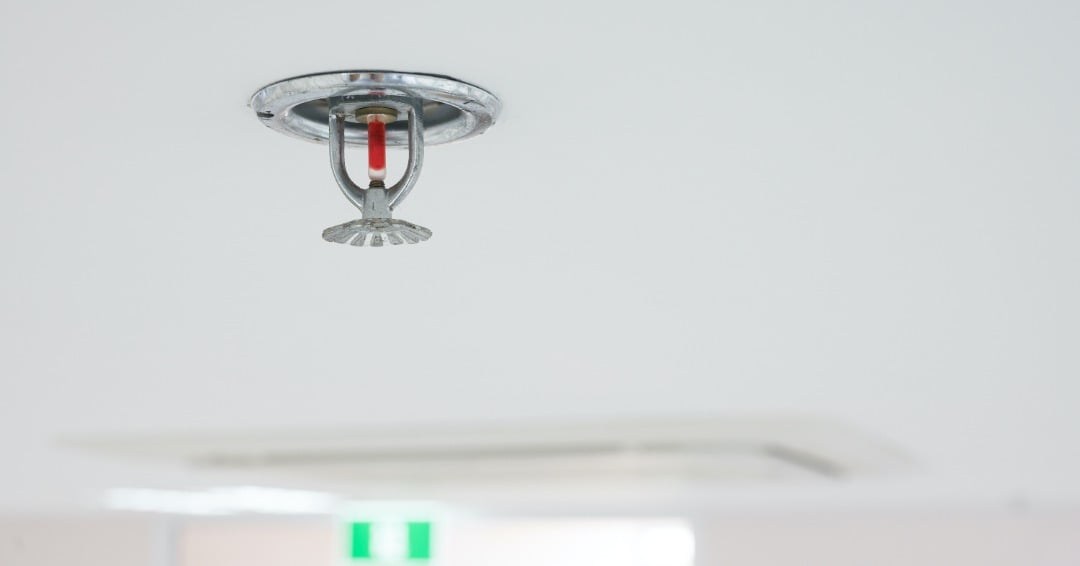Minnesota Building Code: Sprinkler Requirements Explained
by Brothers Fire & Security | Oct 23, 2023 | Security System, Monitoring | 0 comments

Fire sprinkler provisions have been in building codes for decades. Automatic fire sprinkler systems improve survival rates and decrease the risk of financial loss by limiting the spread of flames. A well-designed automatic sprinkler system is critical to the overall safety of a residential building.
A common misconception among designers and property owners is that the NFPA 13, Standard for the Installation of Sprinkler Systems determines which buildings must have automatic sprinkler systems. In actuality, the NFPA 13 identifies the criteria for these fire suppression systems while the building code identifies when they’re required.
In Minnesota, the 2020 Building Code establishes the requirements for automatic sprinkler systems in residential buildings. That said, it’s paramount to review the requirements from all applicable codes in your jurisdiction when determining the minimum fire safety requirements in a building. A good rule of thumb is to adhere to whichever code is more restrictive.
Where Fire Sprinkler Systems Are Code Required
An automatic sprinkler system is to be provided in residential properties in the following use cases:
- Townhouse with 3 or more dwelling units
In this case, each single-family dwelling unit shall be considered to be a separate building and outfitted with an appropriate fire sprinkler system. Attached garages are required to have one dry head sprinkler while attached covered patios/decks (if combustible) and similar structures are required to have at least one dry head sprinkler for every 20 linear feet of common wall or inside sprinklers that act as a water curtain.
However, sprinklers are not required if the attached structures (with the exception of garages) have less than 40 square feet of floor area.
Resource: Different Types of Sprinkler Systems Explained
- Multiunit resort building
A resort building is defined as any structure with sleeping accommodations located on property neighboring any lake, stream or recreational spaces like skiing or hunting areas. Automatic sprinkler systems must be installed if the resort exceeds 9,250 square feet of building area.
Other buildings that must adhere to the same requirements include:
- Bed and Breakfast with 6 or more guest rooms
- Transient and non-transient boarding houses with a capacity of more than 10 occupants
- Transient and non-transient congregate living facilities that can host more than 16 occupants
- Hotels and motels
- Apartment buildings
Note: Automatic sprinklers have been required in residential high-rise buildings for decades, but most public housing complexes in Minnesota were built before the new rule went into place. Following a fire that took the lives of 5 people in 2019 in a Minneapolis high-rise, lawmakers passed a law to require all of these older residential buildings to be retrofitted with sprinklers meeting current building code specifications by 2033. - Convents and monasteries
- Dormitories, fraternities and sororities
- Timeshares
Note: For the properties listed above, automatic sprinkler systems are only required if the dwellings have more than 4,500 square feet of building area.
- Dwellings classified as care facilities that exceed 4,500 square feet of floor area
Care facilities include:
- Child and adult dare care centers
- Supervised living facilities
- Residential hospice facilities
- Adult and child foster care homes
- Senior housing facilities and nursing homes
- Assisted living facilities
Boarding houses, congregate living, and care facilities licensed by the State of Minnesota must be equipped with automatic fire sprinkler systems. The only buildings exempt from having fire sprinkler systems according to the building code are those containing one or two separate single-family dwelling units (however, a separate licensing agency may require them).
Monitoring Fire Protection and Life Safety Systems
The monitoring of fire protection systems is just as important as the systems themselves. Timely detection is key to saving lives and preventing costly property damage and injuries. While the entire system is required to be thoroughly inspected, tested, and maintained annually (once per year minimum of 9 months, maximum 15 months), some components need to be tested semiannually (twice per year with a minimum of 4 months, maximum of 8 months) by an approved servicing company in accordance with Chapter 14 of NFPA 72 (see Tables 14.3.1 and 14.4.5). It’s crucial to work with fire alarm monitoring professionals to ensure your fire protection and life safety systems are up to code and working as they should.
Fire alarm monitoring is an effective way to ensure that no alarms go unheard. To find out more about sprinkler requirements or discuss monitoring services for fire systems, call us at 763-441-2290 or visit our contact us page.
Recent Posts
- Hidden Risks: Why Aging Fire Systems Need More Than Just Annual Inspections
- Strategic Security Camera Placement: Maximizing Protection Through Integration
- Why NFPA 72 Makes Integrated Fire & Security Monitoring Systems Essential
- Benefits of a Building Access Control System
- Ultimate Guide to Fire Extinguishers: Testing, Inspections, Maintenance

